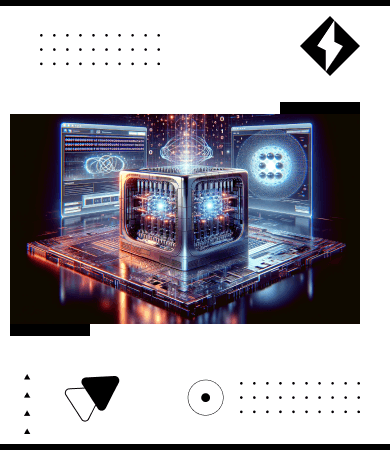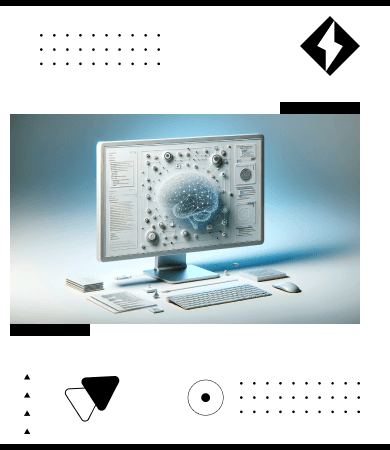Support center +91 97257 89197
Web DevelopmentJune 11, 2024
Benefits of Edge Computing for web applications

Introduction
As the digital landscape continues to evolve, web applications are becoming increasingly integral to business operations. However, the demand for faster, more secure, and efficient applications is pushing the boundaries of traditional cloud computing. This is where edge computing comes into play. Edge computing decentralizes data processing by bringing it closer to the data source, thereby addressing many of the limitations of conventional cloud architectures. In this blog, we will delve into the numerous benefits of edge computing for web applications and why it is becoming a critical component in the modern tech ecosystem.
What is Edge Computing?
Edge computing is a distributed computing paradigm that processes data near the source of data generation, rather than relying solely on centralized cloud data centers. By minimizing the distance data must travel, edge computing reduces latency and bandwidth usage, which can lead to significant improvements in application performance.
Comparison with Traditional Cloud Computing
- Cloud Computing: Centralized data processing, potentially higher latency, more bandwidth usage.
- Edge Computing: Decentralized data processing, lower latency, reduced bandwidth usage.
Key Components of Edge Computing Architecture
- Edge Devices: Sensors, IoT devices, or user devices that generate data.
- Edge Nodes: Local servers or gateways that process and store data close to the edge devices.
- Cloud Backbone: Centralized cloud servers that provide additional processing power and storage as needed.
Benefits of Edge Computing for Web Applications
Improved Performance
One of the primary advantages of edge computing is the significant improvement in application performance. By processing data closer to the end-user, edge computing minimizes latency and accelerates response times, which is crucial for applications requiring real-time processing.
- Reduced Latency: Data does not need to travel long distances to central servers, resulting in faster processing times.
- Enhanced User Experience: Faster load times and more responsive applications lead to better user satisfaction.
Example: A content delivery network (CDN) using edge computing can deliver video streaming services with minimal buffering, enhancing the viewing experience for users worldwide.
Enhanced Security
Edge computing can enhance the security of web applications by decentralizing data processing and reducing the risk of large-scale data breaches.
- Decentralized Data Processing: Reduces the risk of centralized attacks and makes it harder for hackers to access large amounts of data.
- Improved Data Privacy: Sensitive information can be processed locally, minimizing the exposure of private data.
Case Study: A healthcare application that processes patient data locally on edge devices can provide better privacy and security compared to centralized cloud processing.
Scalability and Flexibility
Edge computing offers greater scalability and flexibility for web applications by allowing businesses to add or remove edge nodes as needed.
- Easier Scalability: New edge nodes can be added to handle increasing loads without overhauling the entire infrastructure.
- Flexibility in Handling Workloads: Edge computing can efficiently manage varying workloads and traffic spikes.
Example: An e-commerce platform can deploy edge nodes in different regions to handle local traffic, ensuring consistent performance during peak shopping seasons.
Cost Efficiency
Edge computing can lead to significant cost savings by reducing the amount of data transmitted to and from central cloud servers.
- Reduced Bandwidth Costs: Local data processing decreases the volume of data sent over long distances.
- Lower Operational Costs: Decentralized infrastructure can be more cost-effective to maintain.
Cost-Benefit Analysis: For businesses, the initial investment in edge infrastructure can be offset by ongoing savings in bandwidth and operational expenses.
Reliability and Resilience
With edge computing, web applications can achieve higher reliability and resilience due to the distributed nature of the architecture.
- Increased Fault Tolerance: Distributed nodes can continue functioning even if some nodes fail, ensuring continuous service.
- Improved Reliability: Applications remain operational during network outages or failures.
Example: A smart grid application can continue to function effectively by processing data locally at each node, even if some nodes go offline.
Real-Time Data Processing
For applications that require real-time data analysis, edge computing provides an invaluable advantage by enabling immediate data processing.
- Advantages for Real-Time Applications: Applications in IoT, gaming, and augmented reality benefit from reduced latency and immediate data processing.
- Use Cases: IoT sensors in a smart city can analyze and respond to data locally, providing timely insights and actions.
Example: An augmented reality game can process player interactions locally to provide a seamless and immersive gaming experience.
Challenges and Considerations
While edge computing offers numerous benefits, it also presents certain challenges and considerations that businesses need to address.
- Implementation Challenges: Integrating edge computing with existing infrastructure can be complex and require significant upfront investment.
- Security Considerations: While edge computing can enhance security, it also requires robust security measures at each edge node to prevent vulnerabilities.
- Future Trends: As technology evolves, advancements in edge computing, such as 5G integration and AI-driven edge processing, will further enhance its capabilities.
Conclusion
Edge computing is revolutionizing the way web applications are developed and deployed by offering improved performance, enhanced security, scalability, cost efficiency, reliability, and real-time data processing. As businesses continue to seek competitive advantages, adopting edge computing can provide the technological edge needed to stay ahead. Now is the time for businesses to explore and implement edge computing solutions to fully harness its potential.
TLDR
Edge computing brings numerous benefits to web applications, including improved performance, enhanced security, scalability, cost efficiency, reliability, and real-time data processing. By processing data closer to users, businesses can achieve faster load times, better user experiences, and reduced operational costs.
FAQs
Edge computing is a distributed computing paradigm that brings computation and data storage closer to the data source, such as end-users, IoT devices, or local servers, to improve response times and save bandwidth.
Edge computing improves performance by reducing latency, as data is processed closer to the user, resulting in faster load times and a better overall user experience.
Edge computing enhances security by decentralizing data processing, reducing the risk of centralized attacks, and improving data privacy through local processing of sensitive information.
Yes, edge computing offers scalability by allowing businesses to add more edge nodes as needed, providing flexibility in handling varying workloads and traffic spikes.
Edge computing can be cost-effective by reducing bandwidth costs, lowering operational expenses, and providing a cost-benefit advantage through decentralized infrastructure.
Work with us







